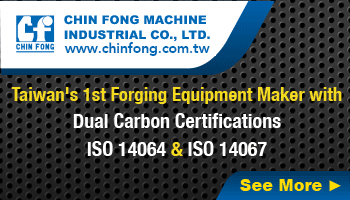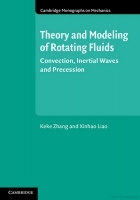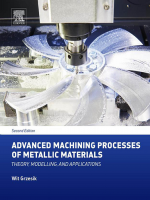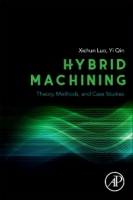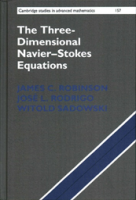Właściwości tribologiczne warstwy wierzchniej po obróbkach wykończeniowych stopu aluminium *
Tribological properties of aluminium alloy surface layer after finishing treatments
Author: Janusz Kalisz
Mechanik nr 07/2018 - Biuletyn Instytutu Zaawansowanych Technologii Wytwarzania
STRESZCZENIE: Przedstawiono wyniki badań struktury geometrycznej powierzchni i właściwości tribologicznych stopu aluminium EN AW-AlCu4MgSi(A) po różnych obróbkach wykończeniowych: szlifowaniu, polerowaniu i nagniataniu tocznym. Do badania odporności na zużycie ścierne oraz wyznaczenia współczynnika tarcia użyto testera T-01M. Testy przeprowadzono w warunkach tarcia suchego, metodą ball-on-disc. Jako przeciwpróbkę zastosowano polerowaną kulkę z ceramiki Al2O3 o średnicy ⌀6 mm. Po nagniataniu uzyskano w badaniach tribologicznych około dwukrotne zmniejszenie wskaźnika zużycia objętościowego w porównaniu ze szlifowaniem i polerowaniem. W zależności od rodzaju obróbki powierzchniowej współczynniki tarcia wynoszą: 0,45 po szlifowaniu, 0,34 po polerowaniu i 0,32 po nagniataniu tocznym.
SŁOWA KLUCZOWE: nagniatanie toczne, szlifowanie, polerowanie, właściwości tribologiczne, chropowatość powierzchni
ABSTRACT: Investigation’s results of the surface geometric structure and tribological properties of the aluminum alloy EN AW-AlCu4MgSi(A) processed by various finishing treatments: grinding, polishing and ball burnishing are presented in the paper. The test of abrasive resistance and friction coefficient determination was carried out by usage of the T-01M tester. The tests were carried out under dry friction conditions using the ball-on-disc method. As a counter-sample, a polished Al2O3 ceramic ball with a diameter of 6 mm was used. After burnishing, comparing to grinding and polishing, an approximate twice reduction of the volume wear rate was obtained. Depending on the type of surface treatment mean friction coefficients are 0.45 after grinding, 0.34 after polishing and 0.32 after ball burnishing.
KEYWORDS: ball burnishing, grinding, polishing, tribological properties, surface roughness
BIBLIOGRAFIA / BIBLIOGRAPHY:
- Przybylski W. “Technologia obróbki nagniataniem”. Warszawa: Wydawnictwo Naukowo-Techniczne, 1987.
- Brostow W., Cygan S., Czechowski K., Kalisz J., Laszkiewicz-Łukasik J., Łętocha A. „Tribological properties of (EN AW-Al-Cu4MgSi(A)) aluminium alloy surface layer after ball burnishing”. BALTTRIB’ 2015 VIII International Scientific Conference Proceedings. 26–27 listopada 2015. Aleksandras Stulginskis University, Kaunas, Lithuania, s. 64–67.
- El-Tayeb N.S.M., Low K.O., Brevern P.V. “Influence of roller burnishing contact width and burnishing orientation on surface quality and tribological behaviour of Aluminium 6061”. Journal of Materials Processing Technology. 186, 1–3 (2007): s. 272–278.
- Kalisz J., Żak K., Grzesik W., Czechowski K. “Properties of the subsurface layer after rolling burnishing of an initially milled aluminium alloy”. Journal of Machine Engineering. 17, 3 (2017): s. 66–74.
- Kalisz J., Żak K., Grzesik W., Czechowski K. “Characteristics of surface topography after rolling burnishing of EN AW-ALCu4MgSi(A) aluminium alloy”. Journal of Machine Engineering. 15, 1 (2015): s. 71–80.
- Kalmegh A.P., Khodke P.M. “Review on low plasticity burnishing process: A potential for improving mechanical properties of material”. International Journal of Mechanical Engineering and Technology. 8, 5 (2017): s. 791–810.
- Więckowski W., Adamus J. “Friction and wear testing of titanium and aluminium alloys”. Obróbka Plastyczna Metali. 24 (2013): s. 169.
- Burakowski T. „Areologia. Podstawy teoretyczne”. Radom: Wydawnictwo Naukowe Instytutu Technologii Eksploatacji, 2013.
- Hemanth S., Harish A., Nithin Bharadwaj R., Abhishek B. Bhat, Chetan Sriharsha. “Design of roller burnishing tool and Its effect on the surface integrity of Al 6061”. Materials Today: Proceedings. 5, 5, 2 (2018): s. 12848–12854.
DOI: https://doi.org/10.17814/mechanik.2018.7.63
* Artykuł recenzowany


.jpg)




